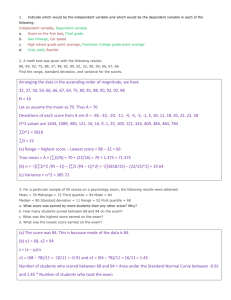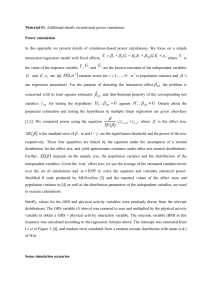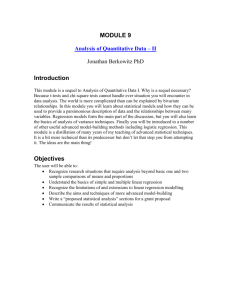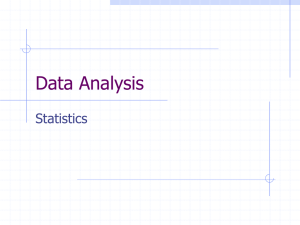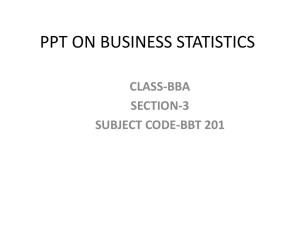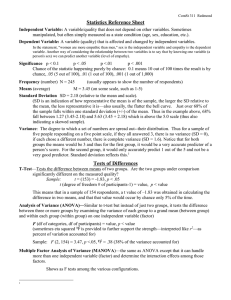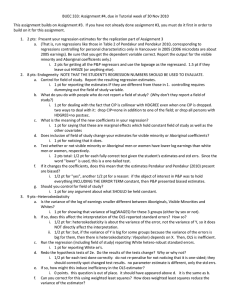Inferential statistics
advertisement
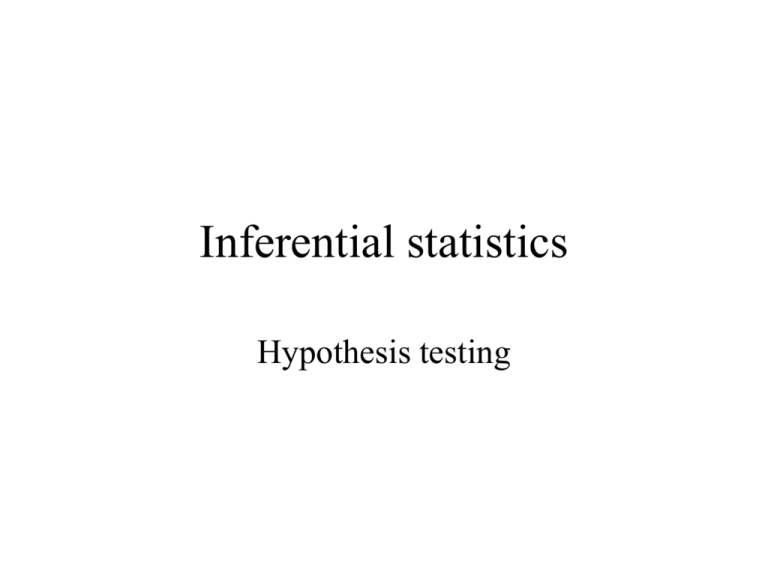
Inferential statistics Hypothesis testing Questions statistics can help us answer • Is the mean score (or variance) for a given population different from the one predicted? • Are two populations different on some characteristic? • Are two (or more) variables related in the population under study? • For all three above: Is the finding due to pure chance? – Requires probability sample or randomization Statistical significance • Could my findings be due to chance? (luck) • Researcher sets acceptable level prior to data collection – Less than 5 times in 100 [p < .05] – Less than 1 time in 100 [p < .01] • If the researcher chooses p < .01, then the results are considered ‘statistically significant’ if fewer than 1 sample in 100 would generate a result “like the one found in the study” (depending on what you’re looking for) • Statistical significance is not the same as theoretical or social significance – Very sensitive to sample size Sample difference from ideal number • A sample statistic may be compared to an ideal number (often 50% or the population percentage established by a census) to determine whether the group it represents has some characteristic. • For example, is the population of Telecommunications students more than half male? • Take a sample of Tel students and compare the % who are male to 50% – Depending on the percentage of males in the sample and the size of the sample, you may be able to say that the finding that Tel students are more likely to be male is “statistically significant” Differences between two samples • You may want to see if two samples are different on some characteristic • Compare means of two samples on the outcome measure • If the difference between the two groups is large in comparison to the variance within groups, then there will be a statistically significant difference between groups For example: • Are Telecommunications students more likely to be male than are Geography students? Comparisons among groups • Commonly used in experimental studies • t-test – preferred where two groups can be compared according to a hypothesis • ANOVA – – – – comparison among multiple groups allows for factorial designs good at dealing with interactions F ratio Main effect of commercial 35 30 25 20 Male Female 15 10 5 0 Commercial A Commercial B Main effect of gender 35 30 25 20 Male Female 15 10 5 0 Commercial A Commercial B Interaction 35 30 25 20 Male Female 15 10 5 0 Commercial A Commercial B Relationships among variables • Eyeballing a scatterplot Statistics of association • If we want a more precise test as to what extent two variables are related, we would look at a statistic of association • Different statistics are used depending upon the kind of scale we are concerned with and the assumed population distribution of the variables – Parametric – Nonparametric • Two nominal—Chi-square (non-parametric) • Two ordinal—Spearman’s rho • Two ratio—Pearson’s r Covariance among variables • Correlation • How much of the variance in one measure can be accounted for by variance in another? • Essentially, when we know where someone stands on one variable, how much does it help us predict where they stand on another? • Stats: Pearson’s r; r2 coefficient of determination • Regression Linear regression • Minimizes total squared distances between individual data points and regression line – y=ax+b • allows for prediction of behavior of dependent variable • preferred to simple correlation Multiple variables • We can statistically analyze the relations among multiple variables at the same time • Attempt to determine unique contribution of a single independent variable – Identify, then remove the effect of variables not currently being tested – Evaluate relationship between predictor variable of interest and “corrected” scores on dependent variable Common statistical methods • Multiple correlation • Multiple regression – Variables may be entered according to theoretical model or their predictive strength So: • Inferential statistics do two jobs: – They provide an estimate of how likely it is that your findings are due to chance – They provide an estimate of the ‘size’ of the relationship between two or more variables • The appropriate statistics vary by the method you used to collect data, the assumed population distribution of your variables and the scale types you employed to measure them


